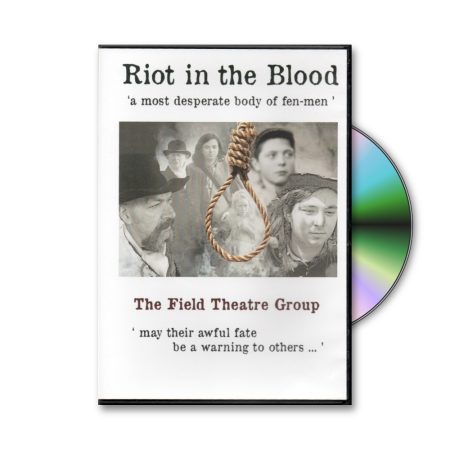In 1815, with the country bankrupted by years of fighting in the Napoleonic Wars; the exhausted, wounded, hungry, and now jobless war veterans returned home to Littleport, Cambridgeshire.
Thousands of miles away, the volcano Mount Tambora in Indonesia had erupted, spewing tons of ash, sulphur, and other debris into the atmosphere. The eruption was so intense that the explosion was heard 1600 miles away, and its noxious plume would go on to lower global temperatures, diffuse sunlight, and result in 1816 becoming known as ‘the year without a summer’. This was an international disaster, and one that Littleport did not escape.
Crops failed around the world, and hungry people grew angry as the shortages of grain pushed basic foods like bread to exorbitant prices. This was a 19th Century cost of living crisis and the people of Littleport – mostly poor agricultural workers – faced deeper poverty and starvation. So, on the evening of 22nd May 1816, things came to a head and the people of Littleport took a stand.
The Globe Public House
A group of people met in The Globe – a pub that stood on Main Street. They’d had enough, and during their alcohol-fuelled discussions they decided that they would direct their despair at their low wages towards the local landowner and farming employer, Mr Henry Martin.

(Ref: LS-XXX)
Henry Martin was not at home (he’d snuck past the rioter’s road block), but it was perhaps to the misfortune of his grandmother Rebecca Waddelow and her visitor Mary Cutlack who were both robbed after their negotiation attempt failed to stifle the anger.
A riot was now in motion, and it soon spread into smaller riots, with looting, vandalism, and assault sweeping throughout the village and embroiling innocent village folk along the way.
The Riot Act
Having failed to find Henry Martin, the rioters soon came across Rev. John Vachell, the vicar of St. George’s Church, and like Martin, a Magistrate. In an attempt to cool their heat, he read them the 1714 Riot Act, but it only added fuel to their fire.
Later that evening, rioter Isaac Harley, who was carrying a pistol, threatened to shoot the Vicar. Vachell, clearly rattled from the earlier encounter was also carrying a pistol, but without a shot, the rioters overcame the latter and his house was ransacked.
The Vachell family fled to safety at nearby Ely, where they give a freshly empowered army of Special Constables details of the riot’s progress.
Help arrives
Amongst the chaos, men were sent on horseback to Ely and Bury St. Edmunds to call for assistance in curbing the riots.
The Royal Dragoons arrived on 23rd May to help quell the riots, and they finally ended on the 24th.
In all, one rioter was killed, a Dragoon was injured, at least one rioter fled, and 82 people (in Littleport and Ely) had been arrested.
The martyrs
With jail cells bursting with prisoners, the pressure was on for judges to punish those who had rioted. The courts worked their way through the charges of the 82 prisoners, and of those found guilty, 23 men and 1 woman were condemned to death.
After mounting pressure, judges were forced to reduce sentences, with many of those arrested receiving 1 year in jail or transportation for life to Van Dieman’s Land (now known as the island of Tasmania), Australia.
However, a deterrent was still needed, and so the judges decided to reduce the list of 24 people condemned to death, down to five men – seen as the ring leaders and the worst of the prisoners of Littleport. These men were sentenced to death by hanging.
- William Beamiss
- George Crow
- Isaac Harley
- John Dennis
- Thomas South
And so, in Ely, as the gallows dropped them to their deaths, they were simultaneously lifted to martyrdom. Their bodies were placed in coffins and put on display for others to see. They were eventually buried together in a grave in St. Mary’s Church, Ely, and a stone nearby told of their fate – a stark warning to all those with similar ideas of rebellion.
The stone has since been replaced, but the original is now within The Littleport Society collection, along with a number of other items from this turbulent time. You can browse our online catalogue to learn more about them, or visit the archive.
More local history
Explore more of Littleport’s rich local history with The Littleport Society.
Explore our Littleport Riot gifts
See below for our latest Littleport Riot-themed gifts, or browse our full range in our shop.
Main Illustration: Rioters arriving at The Globe, Main Street, in 1816. Illustrated by Theresa Goodwin.






